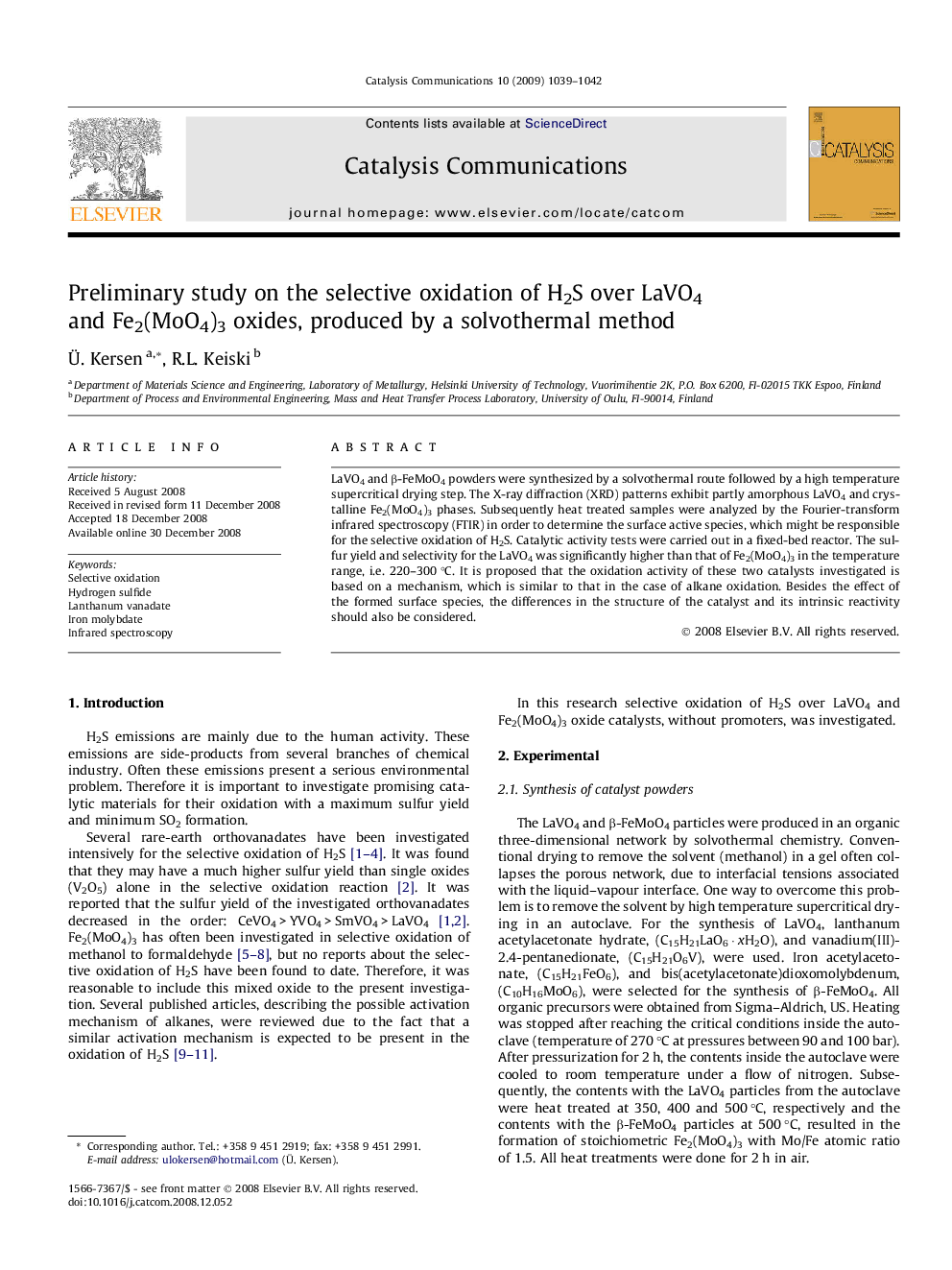| Article ID | Journal | Published Year | Pages | File Type |
|---|---|---|---|---|
| 51528 | Catalysis Communications | 2009 | 4 Pages |
LaVO4 and β-FeMoO4 powders were synthesized by a solvothermal route followed by a high temperature supercritical drying step. The X-ray diffraction (XRD) patterns exhibit partly amorphous LaVO4 and crystalline Fe2(MoO4)3 phases. Subsequently heat treated samples were analyzed by the Fourier-transform infrared spectroscopy (FTIR) in order to determine the surface active species, which might be responsible for the selective oxidation of H2S. Catalytic activity tests were carried out in a fixed-bed reactor. The sulfur yield and selectivity for the LaVO4 was significantly higher than that of Fe2(MoO4)3 in the temperature range, i.e. 220–300 °C. It is proposed that the oxidation activity of these two catalysts investigated is based on a mechanism, which is similar to that in the case of alkane oxidation. Besides the effect of the formed surface species, the differences in the structure of the catalyst and its intrinsic reactivity should also be considered.
